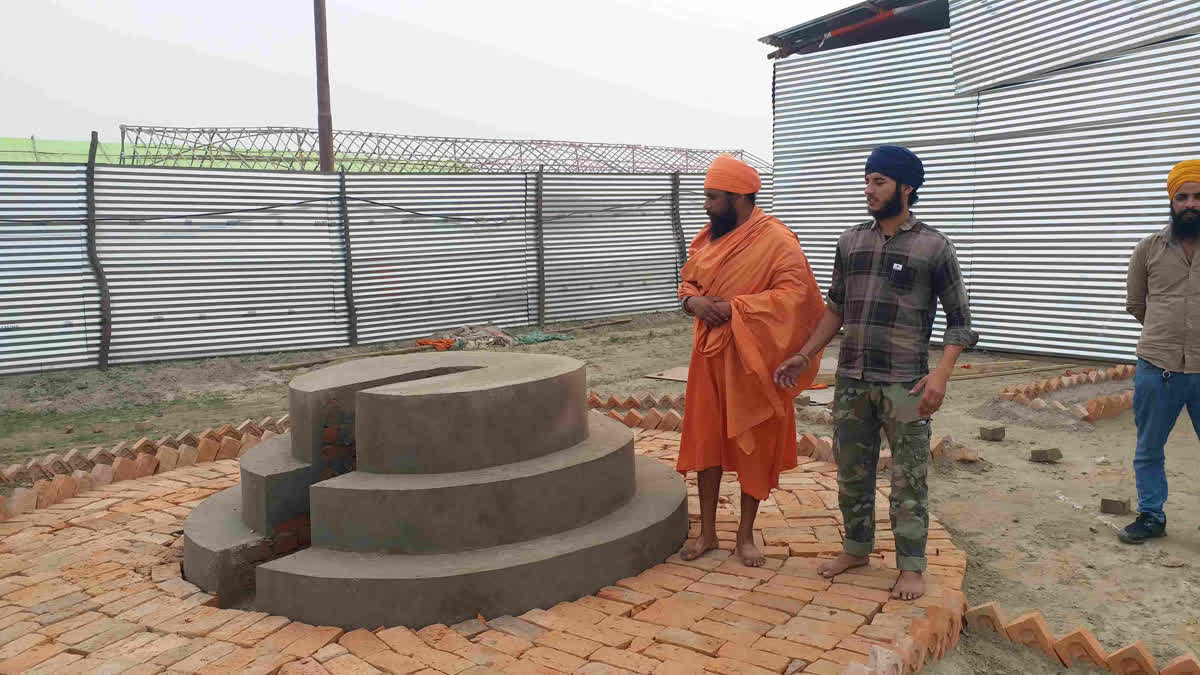Prayagraj: Out of the 13 Akharas coming to Maha Kumbh 2025, seven are Sanyasis and three each from Vaishnav and Udasi sects.
In one of the Akharas, the Shri Panchayati Akhara Nirmal, the tradition of installing the Dharmadhwaja is completely different from the 12 others. While the members of the other Akharas, enter the camp of the fair area after installing the Dharmadhwaja, those of Shri Panchayati Akhara Nirmal Akhara, hoist the flag installed after the sadhus and saints enter the camp.
A different tradition
At the beginning of the Kumbh Mela, the Dharmadhwaja is installed in the camps of the Akharas before the sadhus and saints enter the camp. In this sequence, the Dharmadhwaja of 12 out of 13 Akharas has been installed in their respective camps built in the fair area. Mahant Devendra Singh Shastri of Shri Panchayati Akhara Nirmal said before hoisting of the Dharmadhwaja in the Akhara, the saints, mahant and Mahamandleshwar enter the cantonment built in the fair area. After this, the Dharmadhwaja is hoisted. This tradition has been prevalent in the Akhara for centuries. After the Dharmadhwaja is set up, the saints and others sit under it and perform various rituals.
Mahant Devendra Singh Shastri of Shri Panchayati Akhara Nirmal explaining the unique rituals of the Akhara (ETV Bharat) Temple set up under Dharmadhwaja
Along with this, the saints establish their Ishtadev (deity) in the temple built under the Dharmadhwaja. The Guru Granth Sahib is recited and other rituals performed under the religious flag. The saints of Shri Panchayati Akhara Nirmal will enter the camp on January 11 in a procession. A day later, on January 12, the Dharmadhwaja will be hoisted in the camp amid chants of Veda and performance of rituals.
The upcoming Maha Kumbh Mela in Prayagraj, Uttar Pradesh, will commence on January 13 and continue until February 26, 2025. It is estimated that 40 to 45 crore devotees from India and abroad will gather for this grand religious event. The Maha Kumbh is one of the largest religious gatherings in the world, offering not just a spiritual experience but also a sacred bath at the Akharas. Before delving into the events, it's essential to understand the mythological origins and significance of the Kumbh and Maha Kumbh.
The mythological story of Kumbh
According to mythology, the story of the Kumbh begins with the war for the nectar (Amrit) that emerged during the churning of the ocean (Sagar Manthan). The Gods and demons fought fiercely for the Amrit. In the struggle, the Amrit spilt from the Kalash (vessel) and fell at four different locations: Haridwar (Uttarakhand), Prayagraj (Uttar Pradesh), Ujjain (Madhya Pradesh) and Nashik (Maharashtra).
